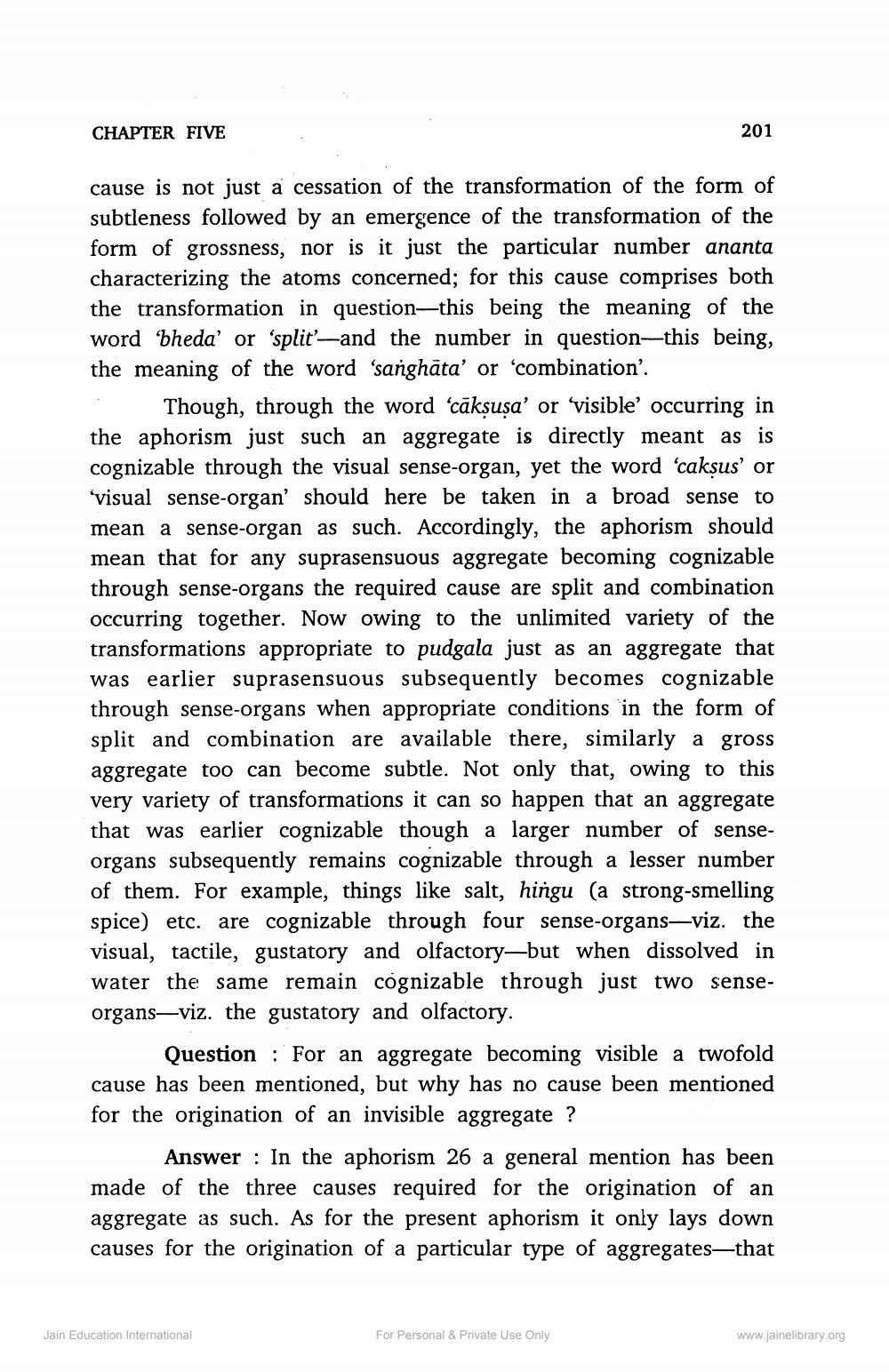________________
CHAPTER FIVE
201
cause is not just a cessation of the transformation of the form of subtleness followed by an emergence of the transformation of the form of grossness, nor is it just the particular number ananta characterizing the atoms concerned; for this cause comprises both the transformation in question—this being the meaning of the word bheda' or 'split—and the number in question--this being, the meaning of the word 'sanghāta' or 'combination'.
Though, through the word 'cāksusa' or 'visible' occurring in the aphorism just such an aggregate is directly meant as is cognizable through the visual sense-organ, yet the word 'cakṣus' or 'visual sense-organ' should here be taken in a broad sense to mean a sense-organ as such. Accordingly, the aphorism should mean that for any suprasensuous aggregate becoming cognizable through sense-organs the required cause are split and combination occurring together. Now owing to the unlimited variety of the transformations appropriate to pudgala just as an aggregate that was earlier suprasensuous subsequently becomes cognizable through sense-organs when appropriate conditions in the form of split and combination are available there, similarly a gross aggregate too can become subtle. Not only that, owing to this very variety of transformations it can so happen that an aggregate that was earlier cognizable though a larger number of senseorgans subsequently remains cognizable through a lesser number of them. For example, things like salt, hingu (a strong-smelling spice) etc. are cognizable through four sense-organs—viz. the visual, tactile, gustatory and olfactory—but when dissolved in water the same remain cognizable through just two senseorgans—viz. the gustatory and olfactory.
Question : For an aggregate becoming visible a twofold cause has been mentioned, but why has no cause been mentioned for the origination of an invisible aggregate ?
Answer : In the aphorism 26 a general mention has been made of the three causes required for the origination of an aggregate as such. As for the present aphorism it only lays down causes for the origination of a particular type of aggregates—that
Jain Education International
For Personal & Private Use Only
www.jainelibrary.org




